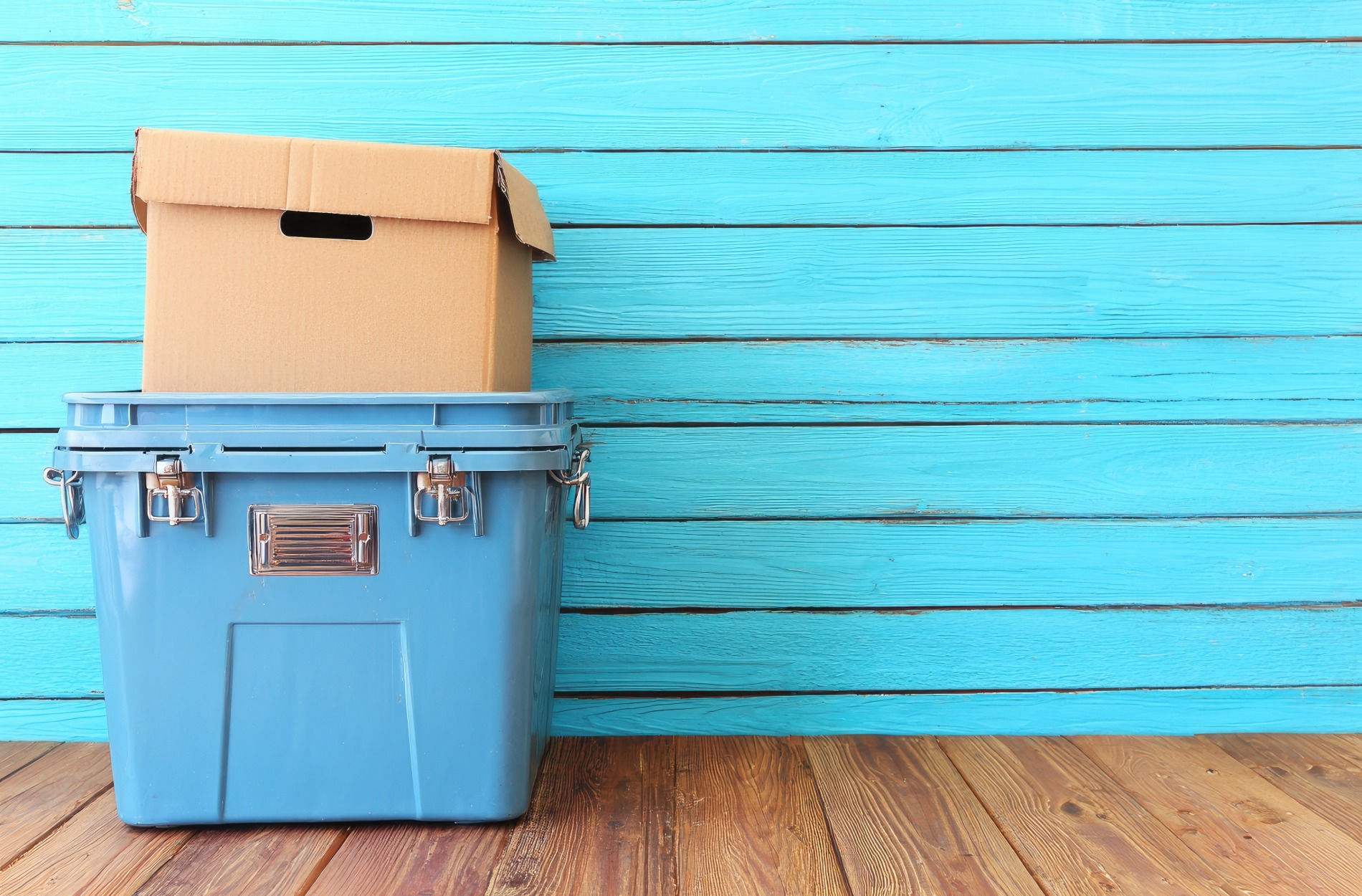Returnable packaging plays a big role in how products move safely and efficiently through a supply chain. For businesses using these containers over and over again, it’s not just about saving money or reducing waste. It’s also about making sure these boxes can still do the job they were designed for. If one returnable box fails, it could mean product damage, supply hiccups, or costly delays. That’s why routine inspections matter.
As we move into fall here in Rochester, NY, many facilities are gearing up for increased end-of-year shipments. This makes it a perfect time to review your returnable packaging inspection routines. Whether you’re handling electronics, auto parts, or medical supplies, a thorough check can help prevent small problems from becoming big ones. Here’s what to focus on when looking over your returnable boxes.
Check For Damage And Wear
The first thing to look for is obvious damage. These boxes are often built to last, but repeated use and rough handling during transport can cause trouble over time. It helps to have a go-to list of things your team should spot right away.
Give attention to:
– Cracks and splits in the walls or surface
– Warping or soft spots from water damage
– Loose lids or covers
– Missing or broken corners
Even small flaws like sharp edges or hairline cracks can put your goods at risk or make the box unsafe to handle. Regular touchpoints in your system, like when boxes are emptied or stacked, are great times to spot and flag damage.
Next, look at how sturdy the box still feels. Sometimes materials get weak from repeated use, even if no damage is clearly visible. Give boxes a light shake or press to confirm they hold their shape. Any sign of flexing, sagging, or bending along the seams could mean it’s time to retire that box from use. One broken box can create a big mess, especially when it’s stacked below several others.
Make sure to have a tracking system in place. Mark damaged boxes immediately and remove them from circulation. This prevents them from cycling back into service and causing problems later.
Verify Cleanliness And Hygiene
Returnable boxes should be just as clean going out as they were when they came in. Contamination can be a big issue, especially if the contents are sensitive or regulated. Whether it’s grease, dust, debris, or unknown residue, your packaging surfaces need to be clean before every reuse.
Start by inspecting the inside and outside of the box, under flaps and around corners. Dirt can collect quickly, especially after long hauls or weather exposure. Pay attention to signs of mold or lingering smells as both are signs that the box may not be safe for reuse without deep cleaning.
If your boxes are used in a controlled environment like medical or food-related shipments, cleanliness checks are even more important. Use mild cleaning agents that won’t wear down the material and set up a routine schedule so cleaning isn’t skipped when things get busy. Some companies assign dates for re-cleaning after a box has been in use for a certain number of cycles.
Make sure cleaning tools and agents used match the material of the box. Foam-friendly cleaners, for example, differ from those made for plastic or corrugated fiberboard. Avoid anything that leaves behind a sticky surface since this can attract even more dust or make the box harder to stack.
A clean returnable box shows your team is serious about product care. It also keeps work areas safer by limiting the spread of dirt, bacteria, or contaminants between shipments.
Assess Functionality Of Components
Once your box looks clean and solid, it’s time to confirm that every part works as expected. Returnable packaging often includes features like locking lids, foldable sides, hinges, trays, or custom closures. When one piece malfunctions, it can lead to mishandling or cause other pieces to fail too.
Check for:
– Loose magnets, clasps, or latches that don’t close completely
– Hinges that stick or catch during folding
– Removable parts that no longer fit properly
– Lids that shift or slide out of place
Even a minor fault like a bent hinge can make stacking unsafe or limit how much you can load into the box. That’s why it helps to list the components that need checking and train your team to run through that list quickly and often.
Keep spare parts on hand if your packaging allows for component swaps. That way, small fixes don’t hold up shipments. If a repair can’t be made on the spot, pull the box from use and mark it. Fix it later, but don’t risk pushing it through the system as-is.
Having properly working returnable boxes means fewer delays and better protection for what’s inside. That reliability builds trust within your team and with your customers. When your packaging works, everything it carries tends to arrive just as it should.
Evaluate Customization Features
If your returnable boxes include any special inserts, modular dividers, or padding features, these deserve some extra attention during inspections. Custom additions play a big part in how well the package protects its content and keeps items organized during transport. When these features break or shift from their original position, it could cause movement inside the box that leads to damage.
Here are key things to review during your check:
– Confirm that inserts, trays, or compartments are secure and haven’t come loose
– Look for wear or flattening in areas with foam padding or cushioning
– Inspect any sewn, bonded, or glued areas to see if they’re still strong
– Make sure customized fitments still align with the product shape
Industries like medical or electronics rely on precision during shipping. A box that’s slightly off in shape or padding can affect product stability or cause scratched surfaces. In some setups, tools or parts even snap into place inside molded inserts. That’s great for organization but only if the mold stays intact.
If you notice damaged inserts, even minor ones, it’s best to flag the box for repair or adjustment. Waiting until those problems build up usually leads to wasted time later. Depending on the box type, some customization pieces can be swapped out or refitted without having to replace the entire unit.
A returnable box is more than just a container. It’s part of your product’s delivery system. Keeping its custom features in working order helps maintain performance and gives users more confidence during every handoff.
Enhance The Longevity Of Your Returnable Boxes
Maintenance doesn’t have to be complicated, but skipping it will shorten the life of your returnable boxes. A little attention now makes a big difference later, especially heading into busier shipping seasons like late fall in Rochester, NY. That’s when higher volume and colder weather can really put your containers to the test.
To keep things simple, follow a monthly maintenance plan:
1. Set up a visual inspection checklist for every part of the box, including hinges, seals, and closure mechanisms
2. Schedule basic cleanings before storage or reassignment
3. Make space in your warehouse for damaged boxes that need repair or review
4. Identify common damage patterns so adjustments can be made to how boxes are packed, loaded, or handled
5. Rotate boxes in and out of use evenly so wear is spread across the full inventory
Correcting small issues before they grow into bigger concerns takes a bit of planning but pays off when your team isn’t scrambling to find last-minute replacements.
Training your team also helps. When everyone understands what to look for, maintenance becomes part of the daily workflow. It’s more than just catching problems, it’s about preventing them early. During one quarterly maintenance window, a Rochester shipping coordinator spotted unusually fast wear forming on the bottom edges of several molded containers. Turns out, a new forklift attachment with slightly misaligned arms was causing the pressure. Fixing that equipment saved the entire batch of containers from early failure.
These sorts of inspections and bits of routine care stretch every container’s lifespan. Instead of chasing replacements, teams can keep their focus on getting shipments out on time without setbacks.
Secure Your Products With Proper Inspection
Returnable boxes can only do their job well when they’re regularly checked and cared for. Each inspection is a simple step that protects your items, maintains the safety of your team, and reduces how often you need replacements. Even strong materials wear down. Latches loosen. Inserts shift. Your process should catch these things before they cost you.
By making inspections routine, your shipping workflow becomes smoother. Fewer delays. Fewer surprises. Better organization across the warehouse floor.
In Rochester, where weather and supply timelines can both get tricky during fall, keeping your packaging up to standard puts you in a much better spot. Tight systems leave less room for error and more room to meet deadlines without scrambling. Regular and focused inspection habits build trust among your team and your clients because everything runs more predictably when packaging holds up from point A to point B.
For ensuring your goods are shipped with confidence and efficiency, it’s important to invest in reliable packaging solutions. Explore how Orcon Industries can support your needs with our innovative returnable boxes. By focusing on durability and functionality, we help maintain product integrity through every stage of your supply chain. Looking to enhance your logistical operations? Reach out with your requirements and see how we can streamline your process.




